
- Homepage
- Author
- Aleister Crowley (10)
- Anonymous (12)
- C H Spurgeon (10)
- Charles Dickens (25)
- Edgar Allan Poe (14)
- God (22)
- John Dee (21)
- John Milton (8)
- L. Frank Baum (10)
- Lewis Carroll (41)
- Louisa May Alcott (10)
- Maria Parloa (9)
- Mark Twain (8)
- Mixed Authors (11)
- Rudyard Kipling (23)
- Selected (8)
- Unknown (32)
- Various (39)
- Walter Scott (9)
- William Shakespeare (28)
- ... (5057)
- Binding
- Cloth (54)
- Cloth & Boards (2)
- Disbound (3)
- Fine Binding (203)
- Framed (2)
- Good (8)
- Hardback (115)
- Hardcover (1122)
- Hardcover / (4)
- Hardcover W / Jacket (3)
- Leather (504)
- Leather / Hardcover (4)
- Manuscript (26)
- Original Copy (99)
- Paperback (6)
- Pigskin (2)
- Softcover (3)
- Softcover, Wraps (87)
- Spiral (2)
- Vellum (54)
- ... (3104)
- Language
- Region
- Subject
- Americana (63)
- Art & Photography (57)
- Children's (182)
- Classic Literature (12)
- Cooking (44)
- Exploration & Travel (51)
- History (277)
- Illustrated (31)
- Law & Government (20)
- Literature (12)
- Literature & Fiction (295)
- Military & War (17)
- Outdoor & Nature (15)
- Performing Arts (10)
- Philosophy (15)
- Poetry (14)
- Reference (51)
- Religion, Bibles (17)
- Science & Medicine (113)
- Sports & Recreation (12)
- ... (4099)
- Topic
Rare Unpublished Manuscript Morgans Civil War Cavalry Raid Handwritten Book Map
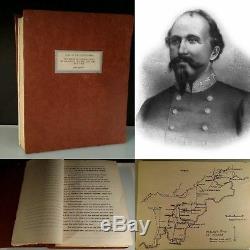
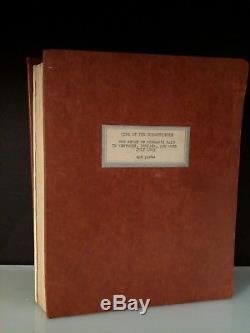
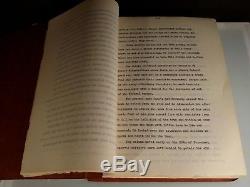
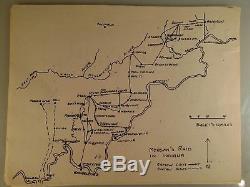
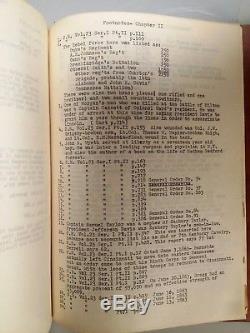
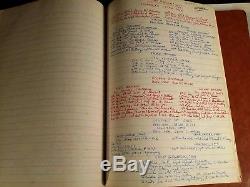
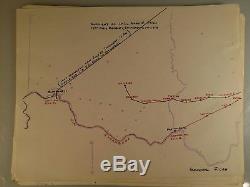
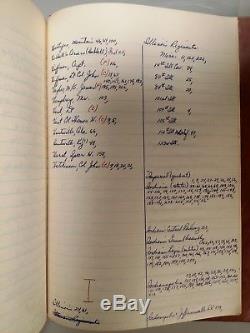
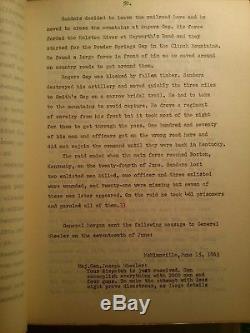
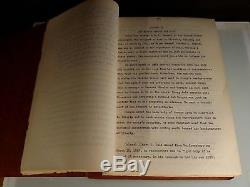
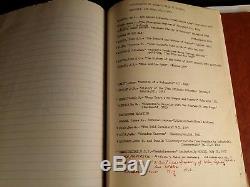
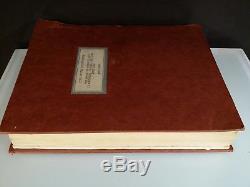


King of the Horsethieves: The Story of Morgans Raid in. Unpublished book manuscript about the history of General John Hunt Morgans US Civil War Confederate cavalry raid into. Original typescript with some handwritten annotation, handwritten and typescript back matter, and hand drawn maps. Morgans Raid was a Confederate cavalry incursion into Northern states that covered over 1,000 miles, and for 18 days penetrated deep behind enemy lines with only a small force of about 2,400 men. The author of this work was an American educator and historian, who while teaching history in 1950, noted that the standard Indiana US History textbook covered Morgans Raid in only one sentence.
He became obsessed with the history of the raid, and spent years studying it and compiling research. The result of his efforts is this 306 page history of Morgans Raid. The book begins in December of 1862, ands from the winter before the raid, through to a day-by-day account of the Raid, and concludes with the Raids aftermath. The book is written with the kind of detail, dialogue, and minutiae that makes for interesting reading. The authors handwritten index is extensive, and I was easily able to go back and locate particular persons, and events.
A fantastic, deeply researched resource, and a truly rare Civil War book (unpublished -only this one copy) for the serious Civil War collector, or historian. About 11 x 9 inches.
Metal prong binding with pressboard covers. Of original typescript, recto only, plus about 74 pages of typescript and handwritten: index, footnotes, chronology of principal events, and a bibliography for Morgans Raid. Includes about 22 pages of loose hand drawn maps (most on mimeograph background). Condition is about Very Good. First two pages have tattered edges and a linen tape repair. Front cover has a short tear at the fore-edge. Other than maybe some articles for a history newsletter, this author appears to be unpublished. No trace of the authors name and its variants, or the title of this work in OCLC, or any of the internet book site catalogs. If this detailed, deeply researched and entertaining history of Morgans Cavalry Raid fits your collecting interests, please consider securing this original manuscript (the sole copy) before it is gone. Their saddles were carried with them in the canoes while their horses swam behind the boats. Two fragile and unstable rafts created problems in the movement of the heavy artillery. The wagons of the supply train which had been taken apart were carried across one piece at a time. Some trouble was encountered in getting the horses through the water. They could swim with the men holding their reins but the strong current began sweeping them downstream. The men had to remove their clothes and jump in the water to guide them. The opposite side was a precipitous bank which was slippery and difficult to climb. In the area were about 12,000 Union soldiers who were guarding the left flank of Rosecrans army. The Federal authorities did not expect a crossing on this day because of the flooded riverthis was a lucky break for the Rebels because the command was badly scattered during the crossing and was practically defenselessThe Union attack came at three oclock in the afternoon when the group of General Henry M.Judahs cavalryappeared and began fighting a harassing action. Rebels repulsed them with one terrible volley. Men who were crossing rushed to help keep the bridgehead that had been established.
They ran into combat although they were completely nude except for the cartridge box and belt around their waists. They had only stopped to grab their belts and guns from the canoes. Imagine the thoughts of the Yanks who saw the naked Rebels charging toward them down the dusty road.
The efficient job done by Morgans outriders made the Union cavalry use Morgans exhausted discards for their replacements. Men were sent out from the head of the main column and from the front of each regiment. They galloped ahead of the column and split into two bodies.One body of men went to the right and the other went to the left of the line of march. They moved five or six miles into the countryside and seized all of the horses they could find. That was from five to twenty miles wide where he left only the best hidden horses.
After the men had taken all available food and horses, they would ride around, completing a circle, and join the rear of the column. This gave the confused defenders the impression that the Rebels were moving in several different directions. It was impossible to predict his line of march because erroneous reports about his direction. Confused and the people in a state of panic during the raid.
The farmersprotested when Morgans men took their horses but the Rebels claimed they were the ones being cheated. Old Box, Morgans Negro body servant, rode along on one of the Generals horses and tormented the prisoners. He yelled to Captain H. Yank, dont you want to ride? He teased them for a while longer until he was ordered to stop by one of the Rebel officers. Mare to General Braggs wife the eighteenth of May apparently as a peace offering. Possibly his relations with Bragg were improving because Bragg named the horse. On the twenty-seventh of May Morgan was again in action. All of his men who had been either at home convalescing or on furloughs reported to their units for duty. The horses in the command were being fed well and they had started to regain the weight lost during the winter. Wagons loaded with new uniforms, guns, and other supplies were moved into his camps from. The First Brigade was armed with two three-inch Parrott guns while the Second Brigade had two twelve-pound howitzers. The howitzers were smaller guns and easily adaptable to cavalry use.They could be transported easily and send a shell over eight hundred yardsthe artillery of both brigades was commanded by Captain Ed Byrnes and his assistant, LT. The men carried individual arms that varied greatly. Almost every man carried two pistols which were usually either the Army Colt, the Navy revolver, or the. Their rifles differed greatly too. Some of the men carried the Enfield rifle but in varying barrel lengths- short, medium, or long.
Which was as effective as the long. But was unhandy to use on horseback.
Others carried the Sharps or Spencer breechloaders and a few had the English made Tower gun. On March 19 Colonel Henry Beebe Carrington, sent a direct wire to President Abraham Lincoln from. The connection of Knights of Golden Circle with Southern traitors is to be noted. At the next raid of Morgan he will leave the command and quietly appear to raise the standard of revolt in. Thousands believe this and his photograph is hung in many houses.
In some counties his name is praised daily. The state was filled, especially in the Southern half, with Southern sympathizing secret societies. The largest of these groups was the Knight of the.
Their membership was estimated to be between 40,000 and 65,000 in Indiana. The organization had secret handshakes, signals, and signs. New members first went into the. Where their views were tested.
If they passed, they moved into the. Where they shared secrets before being moved into the Order. Mc Combs, pulled up to the dock at two oclock in the afternoon of the 7.
Before the crew could tie the boat to its moorings, a swarm of forty Rebels boarded the boat. Captain Ballard, his crew, and fifty passengers were made prisoners without a struggle. The raiders ordered the crew to build up steam and they took the boat into midstream and anchored. They took the cups, dishes, silverware, salt and pepper shakers, and even the tablecloths from the dining salon. While the plundering continued, distress signals were run up the mast to attract the attention of the other expected boat. A short time later the Alice Dean, a side wheeler. Saw the distress flagsand pulled alongside to see if he could assist her. His boat was also boarded and captured. And the Alice Dean lost her stores and supplies. Both boats were then officially pressed into the services of the Confederate States of. Wolford helped relax the officers who were prisoners. He invited General Morgan and several others to share chicken and dumplings with him. He took them to Whittaker House but he warned them: Gentleman, you are my guests.This hotel together with its bar, cigar stand, and other accessories, is at your service and at my expense. Do not go off the square in front of the hotel. General Judah and Movement of. Movements of Colonel William p.
Division of the XXIII Army Corps 22 June-19 July 1863. Movements of Gen Shackleford Commanding 1.Division, XXIIII Army Corps 27 June 1863-26 July 1863. Hobson & Shackleford (Map #1). Hobson & Shackleford (Map #2). Hobson & Shackleford (Map #3).
Division, XXIIII Army Corps 27 June 1863-26 July 1863 and General Hobson Commanding 2. However this item ships to your. Please be sure to enter your. If a return is desired, please send a. Message for the return instructions.Please Note: The picture of John Hunt Morgan (public domain) is for reference and is not included. The item "Rare Unpublished Manuscript Morgans Civil War Cavalry Raid Handwritten Book Map" is in sale since Wednesday, May 16, 2018.
This item is in the category "Antiques\Manuscripts". The seller is "amb_bookseller" and is located in California. This item can be shipped to United States.
- Type: Manuscript typescript & handwritten
- Subject: Military & War
- Original/Facsimile: Original

